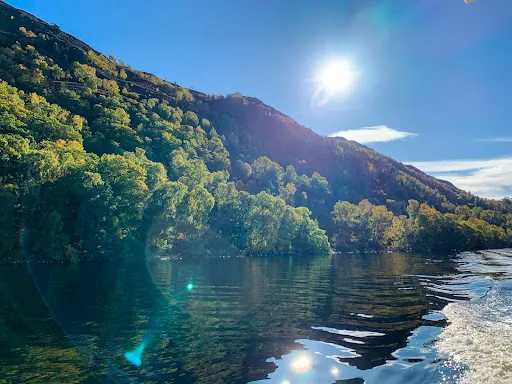Where Is the Sunniest Place in Scotland?

Where is the Sunniest Place in Scotland?
Scotland’s weather is often considered to be quite changeable, and visitors often describe experiencing all four seasons in one day. While the climate itself is actually fairly moderate when compared with other countries in Europe, it is certainly true that some areas of Scotland have experienced more rainfall and lower temperatures than others. So, where is the sunniest place in Scotland?
Voted as the best place to live in Scotland in 2019 by the Sunday Times, the coastal city of Dundee is often cited as being the most consistently sunny place in the whole of Scotland. Dundee sees an average of 1,523 hours of sunshine per year, and was also named as Scotland’s driest city in 2018.
Keep reading to find out where the sunniest place in Scotland is, what a summer in Scotland is like, and how you can best prepare for your visit.
The Sunniest Place in Scotland
Officially, the sunniest month that Scotland has ever experienced occurred on the island of Tiree. During May 1946, Tiree received 329 hours of sunshine. This record has yet to be beaten, however Dundee is consistently recognised as the sunniest place in Scotland. In the winter of 2018-2019, Dundee was recorded as receiving more winter sun than anywhere else in the country during the winter months from December to February. During this time, Dundonians received just over 220 hours of sunshine, which is the third-sunniest winter in Dundee since James Hutton Institute records began in 1954.
Scotland’s east coast frequently receives far less rainfall than the west coast, making it a more favourable destination for holidaymakers.
What is Summer in Scotland like?
June, July and August all tend to deliver the warmest temperatures and sunniest conditions in Scotland compared to the rest of the year, with temperatures typically ranging from 15-17°C. Greycrook, near Kelso, currently holds the record for the highest temperature in Scotland with 32.9°C recorded in August 2003. Due to Scotland’s high latitude, summer days tend to be longer than other areas of the UK. For one day a year, during midsummer, the Northern Isles of Scotland can experience four hours more daylight than London.
Glasgow
Glaswegian summers tend to last for around three months, with temperatures averaging highs of 16°C. Usually, the hottest month for Glasgow is July with an average high of 19°C.
Edinburgh
The average high temperature for Edinburgh during the summer is 19°C, with the hottest months being July and August. While temperatures have been known to reach 31°C, Edinburgh tends to experience fairly mild summers.
Isle of Skye
The Isle of Skye usually experiences slightly colder summers compared to Edinburgh and Glasgow, with the hottest month of July bringing high temperatures of 13°C.
Best Places to Visit During Summer
Just south of Edinburgh, the coastal town of Dunbar also boasts higher temperatures and lower rainfall than other parts of Scotland, and is even referred to by some as ‘Sunny Dunny’. With picturesque beaches, eateries, and shops, Dunbar is enjoyed by many both local and non-local visitors during summer months. For more scenic landscapes in Scotland, the Isle of Skye also offers the perfect getaway for budding photographers and hikers alike.
How to Prepare for Your Visit to Scotland
When you are booking your trip to Scotland, it is important to make sure that you are prepared. Otherwise, you could be caught in difficult weather conditions without the right clothing to keep yourself warm and dry.
‘There’s no such thing as bad weather, just the wrong clothing’. – Billy Connolly
Check the Weather
No matter where you are visiting in Scotland, be sure to check the Met Office before your visit. This should give you accurate information regarding the predicted weather conditions during your stay.
Pack the Right Clothing
Once you have checked the weather forecast, you should get a general idea of what the weather conditions should be like during your stay. However, as mentioned above, the Scottish climate is nothing if not changeable! Remember to pack suitable clothing so that you are prepared for a range of conditions.
Midge Protection
Midges are particularly prevalent in Scotland during the summer months. If you are looking to avoid midges, you should endeavour to visit windy, dry and warm areas of Scotland.
Book your Tour of Scotland Today
If you are looking for a summer getaway to explore some of the most scenic areas of Scotland, be sure to contact us today. James, your tour guide, has extensive experience with providing his clients with top-quality experiences. Take a look at our full range of available tours on our website to find your perfect trip.
